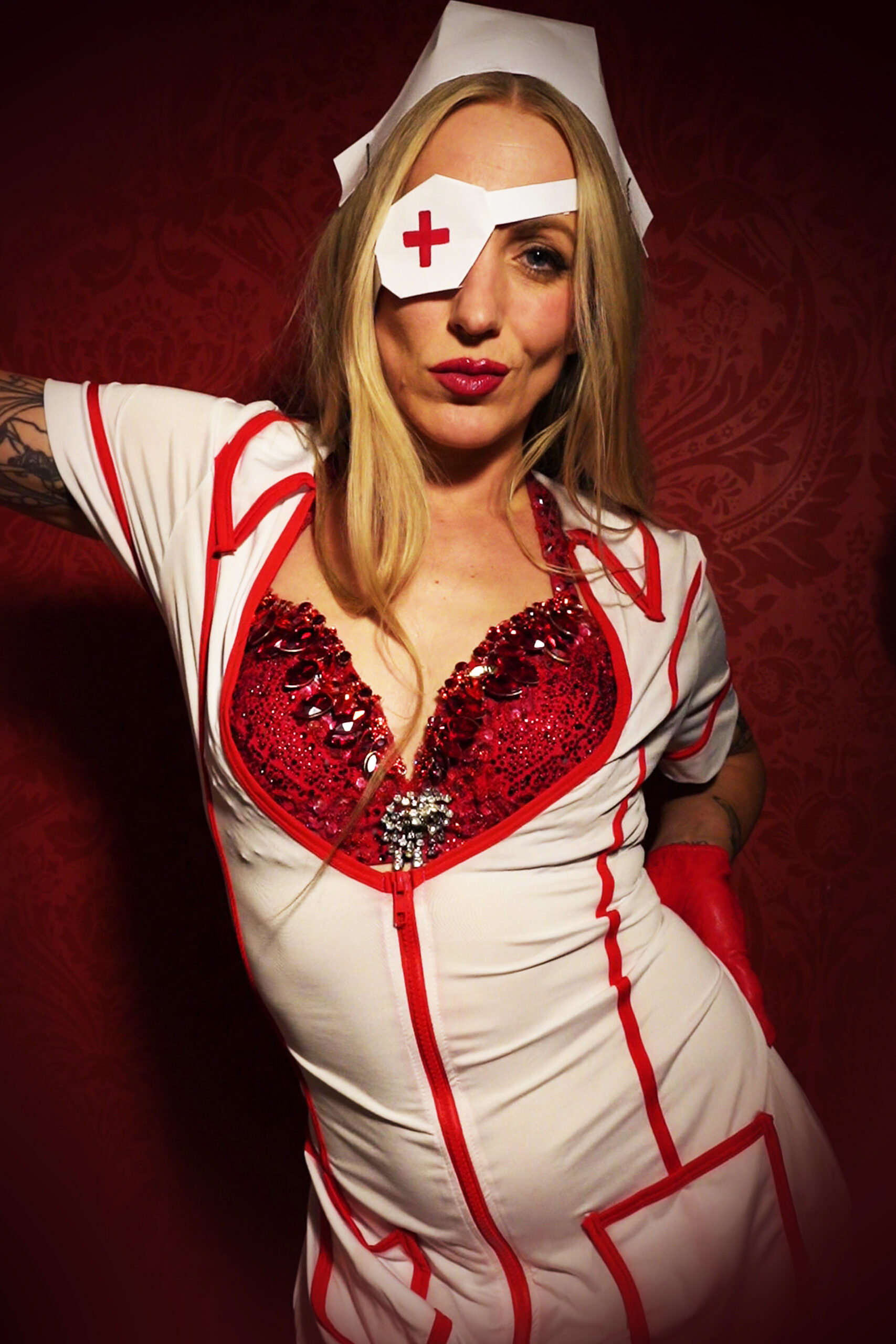Understanding Pansexuality
Pansexuality, an identity often misunderstood, explores attraction that extends beyond traditional binary classifications of male and female. It recognizes a spectrum of genders and expressions, challenging societal norms surrounding who we are drawn to. This exploration delves into the complexities of pansexual attraction, uncovering the nuances and realities of experiencing love and desire outside the confines of gender limitations.
Defining Pansexuality
Pansexuality is characterized by romantic, emotional, and/or sexual attraction to people regardless of their gender identity or expression. It’s an umbrella term encompassing attraction to all genders, including men, women, transgender individuals, non-binary people, and anyone else who identifies outside the traditional binary.
Unlike bisexuality, which typically refers to attraction to two genders (usually male and female), pansexuality embraces a broader spectrum of gender identities.
For pansexual individuals, gender is not a determining factor in their attraction. They find themselves drawn to people based on personality, shared values, mutual interests, and emotional connection, rather than solely focusing on gender.
Distinguishing Pansexuality from Other Sexual Orientations
Understanding pansexuality involves recognizing that attraction goes beyond the traditional confines of male and female. Pansexual individuals are attracted to people regardless of their gender identity or expression. This means they can be attracted to men, women, transgender individuals, non-binary individuals, and anyone else who falls outside the binary.
A key distinction between pansexuality and bisexuality lies in the scope of attraction. While bisexuality often refers to attraction to two genders (typically male and female), pansexuality encompasses attraction to all genders. It’s about recognizing and valuing the diversity of human experience beyond the limitations of gender binaries.
Beyond Binary Gender: Exploring Attraction Beyond the Gender Spectrum
Beyond the traditional confines of male and female, a spectrum of human experiences unfolds where attraction transcends binary classifications. Pansexuality, an identity often misunderstood, sits at the heart of this exploration. It embraces a world where love and desire are not bound by rigid gender roles but flow freely across the diverse tapestry of gender identities and expressions.

Non-Binary and Genderfluid Identities
Pansexuality challenges societal norms surrounding attraction, recognizing that desire transcends the traditional confines of male and female. It encompasses attraction to all genders, celebrating the fluidity and diversity of human experience. Understanding pansexuality requires moving beyond binary limitations and embracing a broader spectrum of gender identities.
For pansexual individuals, gender is not a defining factor in their attraction. They find themselves drawn to people based on personality, shared values, emotional connection, and mutual interests, recognizing that love and desire can flourish beyond the constraints of gender stereotypes.
This fluidity extends to non-binary and genderfluid identities, which further complicate the landscape of attraction. Non-binary individuals identify outside the traditional male/female binary, while genderfluid individuals experience shifts in their gender identity over time. Attraction within these communities is often multifaceted and evolves as individuals explore their own identities.
Exploring attraction beyond the gender spectrum requires empathy, open-mindedness, and a willingness to challenge societal norms. It’s about recognizing that love and desire exist on a spectrum, unbound by rigid classifications and embracing the beauty of human diversity in all its forms.
Attraction to People Across the Gender Spectrum
Pansexuality is characterized by romantic, emotional, and/or sexual attraction to people regardless of their gender identity or expression. It’s an umbrella term encompassing attraction to all genders, including men, women, transgender individuals, non-binary people, and anyone else who identifies outside the traditional binary.
Unlike bisexuality, which typically refers to attraction to two genders (usually male and female), pansexuality embraces a broader spectrum of gender identities.
For pansexual individuals, gender is not a determining factor in their attraction. They find themselves drawn to people based on personality, shared values, mutual interests, and emotional connection, rather than solely focusing on gender.
Understanding pansexuality involves recognizing that attraction goes beyond the traditional confines of male and female. Pansexual individuals are attracted to people regardless of their gender identity or expression. This means they can be attracted to men, women, transgender individuals, non-binary individuals, and anyone else who falls outside the binary.
A key distinction between pansexuality and bisexuality lies in the scope of attraction. While bisexuality often refers to attraction to two genders (typically male and female), pansexuality encompasses attraction to all genders. It’s about recognizing and valuing the diversity of human experience beyond the limitations of gender binaries.
Beyond the traditional confines of male and female, a spectrum of human experiences unfolds where attraction transcends binary classifications. Pansexuality, an identity often misunderstood, sits at the heart of this exploration. It embraces a world where love and desire are not bound by rigid gender roles but flow freely across the diverse tapestry of gender identities and expressions.
Pansexuality challenges societal norms surrounding attraction, recognizing that desire transcends the traditional confines of male and female. It encompasses attraction to all genders, celebrating the fluidity and diversity of human experience. Understanding pansexuality requires moving beyond binary limitations and embracing a broader spectrum of gender identities.
This fluidity extends to non-binary and genderfluid identities, which further complicate the landscape of attraction. Non-binary individuals identify outside the traditional male/female binary, while genderfluid individuals experience shifts in their gender identity over time. Attraction within these communities is often multifaceted and evolves as individuals explore their own identities.
Exploring attraction beyond the gender spectrum requires empathy, open-mindedness, and a willingness to challenge societal norms. It’s about recognizing that love and desire exist on a spectrum, unbound by rigid classifications and embracing the beauty of human diversity in all its forms.
Understanding Asexual and Demisexual Experiences
Beyond traditional understandings of gender, a diverse landscape of sexualities and attractions unfolds. Pansexuality stands as a testament to this, challenging binary limitations and embracing attraction to individuals regardless of their gender identity or expression.
For pansexual individuals, gender is not a determining factor in attraction. They find themselves drawn to people based on personality, shared values, mutual interests, and emotional connection, recognizing that love and desire can flourish beyond the constraints of societal norms.
Understanding pansexuality requires moving beyond binary categories and embracing a broader spectrum of gender identities. It’s about recognizing that attraction exists on a continuum, unbound by rigid classifications.

A key distinction between pansexuality and bisexuality lies in the scope of attraction. While bisexuality often refers to attraction to two genders (typically male and female), pansexuality encompasses attraction to all genders, celebrating the fluidity and diversity of human experience.
This fluidity extends to non-binary and genderfluid identities, which further complicate the landscape of attraction. Non-binary individuals identify outside the traditional male/female binary, while genderfluid individuals experience shifts in their gender identity over time. Attraction within these communities is often multifaceted and evolves as individuals explore their own identities.
Exploring attraction beyond the gender spectrum requires empathy, open-mindedness, and a willingness to challenge societal norms. It’s about recognizing that love and desire exist on a spectrum, unbound by rigid classifications and embracing the beauty of human diversity in all its forms.
Cultural and Societal Influences on Perception of Pansexuality
The perception of pansexuality is shaped by a complex interplay of cultural and societal influences. Traditional views often reinforce binary understandings of gender and sexuality, making it challenging for pansexual individuals to be openly understood and accepted.
Historical Context of Sexual Orientation Labels
Throughout history, the way societies have categorized sexual orientations has evolved considerably. In the past, rigid binary classifications of male and female dominated societal understanding, leaving little room for fluidity or variations in attraction.

Over time, concepts like homosexuality and bisexuality emerged as more people challenged traditional norms and sought to express their identities authentically. However, these terms themselves were often defined within the confines of a male/female binary, failing to encompass the full spectrum of human experience.
The emergence of pansexuality represents a significant step towards recognizing and embracing a broader range of attractions beyond gender binaries. It challenges existing power structures and encourages a more inclusive understanding of sexuality.
Cultural attitudes towards pansexuality vary greatly across the globe. In some societies, where traditional values and norms are deeply ingrained, pansexuality may be met with resistance or even hostility.
Other cultures are becoming increasingly accepting of diverse sexual identities, fostering more open and inclusive environments.
The rise of social movements advocating for LGBTQ+ rights has played a crucial role in raising awareness about pansexuality and challenging societal misconceptions. Visibility through media representation, education, and activism helps to break down stereotypes and create a more understanding world.
Despite progress made, pansexual individuals often face prejudice, discrimination, and lack of support. It’s important to continue promoting education, fostering empathy, and advocating for the rights and well-being of all individuals regardless of their sexual orientation.
Stereotypes and Misconceptions Surrounding Pansexuality
Pansexuality is often misunderstood due to cultural and societal influences that reinforce traditional binary classifications of gender and sexuality. Stereotypes and misconceptions surrounding pansexuality can create barriers to understanding and acceptance.
One common misconception is that pansexuality is synonymous with bisexuality. While both involve attraction beyond the traditional male/female binary, pansexuality encompasses attraction to all genders, including those who identify as non-binary or genderfluid. Bisexuality typically refers to attraction to two genders.
Another stereotype portrays pansexual individuals as promiscuous or having a casual approach to relationships. This generalization fails to recognize the depth and commitment that can exist in pansexual relationships, just as in any other orientation.
Cultural norms and societal expectations can also contribute to misunderstandings. In some cultures, there may be a strong emphasis on heteronormativity, where same-sex attraction or non-traditional gender expressions are not readily accepted. This can lead to prejudice and discrimination against pansexual individuals.
Overcoming these stereotypes and misconceptions requires education, open dialogue, and a willingness to challenge societal norms. Promoting understanding of the diverse spectrum of human experiences and embracing inclusivity are essential steps towards creating a more equitable and accepting world for all.
The Impact of Media Representation
The perception of pansexuality is deeply intertwined with cultural and societal influences, often shaped by traditional views that reinforce binary understandings of gender and sexuality. These prevailing norms can make it challenging for pansexual individuals to be openly understood and accepted.
Historically, societies have predominantly adhered to rigid classifications of male and female, leaving little room for fluidity or variations in attraction. Over time, concepts like homosexuality and bisexuality emerged as people challenged these binary constraints, seeking to express their identities authentically. However, even these terms often remained confined within the confines of a male/female binary, failing to encompass the full spectrum of human experience.
The emergence of pansexuality signifies a crucial step towards acknowledging and embracing a broader range of attractions beyond gender binaries. how to have sex sideways It challenges existing power structures and promotes a more inclusive understanding of sexuality.
Cultural attitudes towards pansexuality vary significantly across the globe. In some societies deeply rooted in traditional values and norms, pansexuality may encounter resistance or even hostility. Conversely, other cultures are progressing towards greater acceptance of diverse sexual identities, fostering more open and inclusive environments.
The rise of social movements advocating for LGBTQ+ rights has been instrumental in raising awareness about pansexuality and challenging societal misconceptions. Increased visibility through media representation, education, and activism contributes to breaking down stereotypes and cultivating a more understanding world.
Despite the progress made, pansexual individuals frequently encounter prejudice, discrimination, and a lack of support. It is essential to continue promoting education, fostering empathy, and advocating for the rights and well-being of all individuals regardless of their sexual orientation.
Media representation plays a significant role in shaping public perception of pansexuality. Positive and accurate portrayals can help to normalize the identity and challenge stereotypes, while harmful or misinformed representations can reinforce negative biases and contribute to prejudice.
Challenges and Experiences of Pansexual Individuals
Pansexual individuals often face unique challenges navigating a world that doesn’t always understand or accept their experiences. Societal norms and expectations rooted in binary gender classifications can create a sense of isolation and misunderstanding.
Coming out as pansexual can be a deeply personal journey, fraught with anxieties about potential rejection from family, friends, or communities. The fear of being ostracized, discriminated against, or subjected to harmful stereotypes can make the process daunting.
Access to support networks and resources is crucial for pansexual individuals, providing safe spaces for connection, validation, and shared experiences. Lack of visibility and representation in media and popular culture can contribute to feelings of invisibility and alienation.
Dating and forming romantic relationships can present additional complexities. Finding partners who are open-minded, accepting, and understand the nuances of pansexuality can be challenging.
Understanding these challenges is crucial for creating a more inclusive and supportive environment where pansexual individuals feel seen, heard, and valued.
Coming Out and Disclosure Challenges
Pansexual individuals often face unique challenges due to societal norms that prioritize binary understandings of gender and sexuality. Coming out as pansexual can be a deeply personal and potentially difficult experience, fraught with anxieties about rejection and potential harm.
The lack of visibility and representation of pansexuality in media and popular culture can contribute to feelings of isolation and make it harder for individuals to find support and understanding. Dating and forming romantic relationships can also present complexities as finding partners who are open-minded and accepting of pansexuality can be challenging.
It is essential to foster empathy, create safe spaces, and promote education to ensure that all individuals, regardless of their sexual orientation, feel seen, heard, and valued.
Navigating Relationships and Societal Expectations
Pansexual individuals navigate a world that often struggles to understand their experiences beyond the confines of traditional gender binaries. Here are some of the challenges they face:
- Societal Misunderstandings: Pansexuality is often misunderstood or confused with bisexuality, leading to stereotypes and misinformation.
- Lack of Visibility: Limited representation of pansexual individuals in media and popular culture contributes to feelings of invisibility and isolation.
- Coming Out Challenges: Coming out as pansexual can be a difficult process, with fears of rejection and potential harm from family, friends, or communities.
- Dating Difficulties: Finding partners who are open-minded, accepting, and understand the complexities of pansexuality can be challenging.
- Discrimination and Prejudice: Pansexual individuals may face discrimination in various aspects of life, including employment, housing, and access to services.
Finding Community and Support Networks
Navigating a world that often struggles to understand identities beyond the traditional binary can present unique challenges for pansexual individuals. Societal norms and expectations rooted in binary understandings of gender can lead to feelings of isolation and misunderstanding.
One significant challenge is encountering societal misunderstandings about pansexuality. It’s frequently confused with bisexuality, leading to stereotypes that limit understanding and acceptance. This lack of awareness can make it harder for pansexual individuals to feel seen and understood.
The absence of visible representation of pansexual experiences in media and popular culture further contributes to feelings of invisibility. When people’s identities are not reflected in the world around them, it can be isolating and reinforce the sense that they don’t belong.
Coming out as pansexual can be a deeply personal and potentially challenging process. Fear of rejection from family, friends, or communities can make it daunting for individuals to share their true selves.
The lack of support networks and resources can exacerbate these feelings of isolation. Finding spaces where they can connect with others who understand their experiences is crucial for well-being and creating a sense of belonging.
Dating and forming romantic relationships also present unique challenges for pansexual individuals. Finding partners who are open-minded, accepting, and truly understand the complexities of pansexuality can be difficult in a world that often operates within binary frameworks.
Overcoming these challenges requires a multifaceted approach that involves education, increased visibility, and fostering supportive communities. By challenging societal norms, promoting understanding, and creating safe spaces for pansexual individuals to express themselves authentically, we can work towards building a more inclusive and equitable world for all.
See the full topic discussed
Read through the entire article
- Why Does My Lip Filler Dissolve So Fast - November 5, 2025
- Why Does My Lip Filler Dissolve So Fast - November 5, 2025
- What Is The Danger Zone For Tear Trough Fillers? - November 4, 2025
